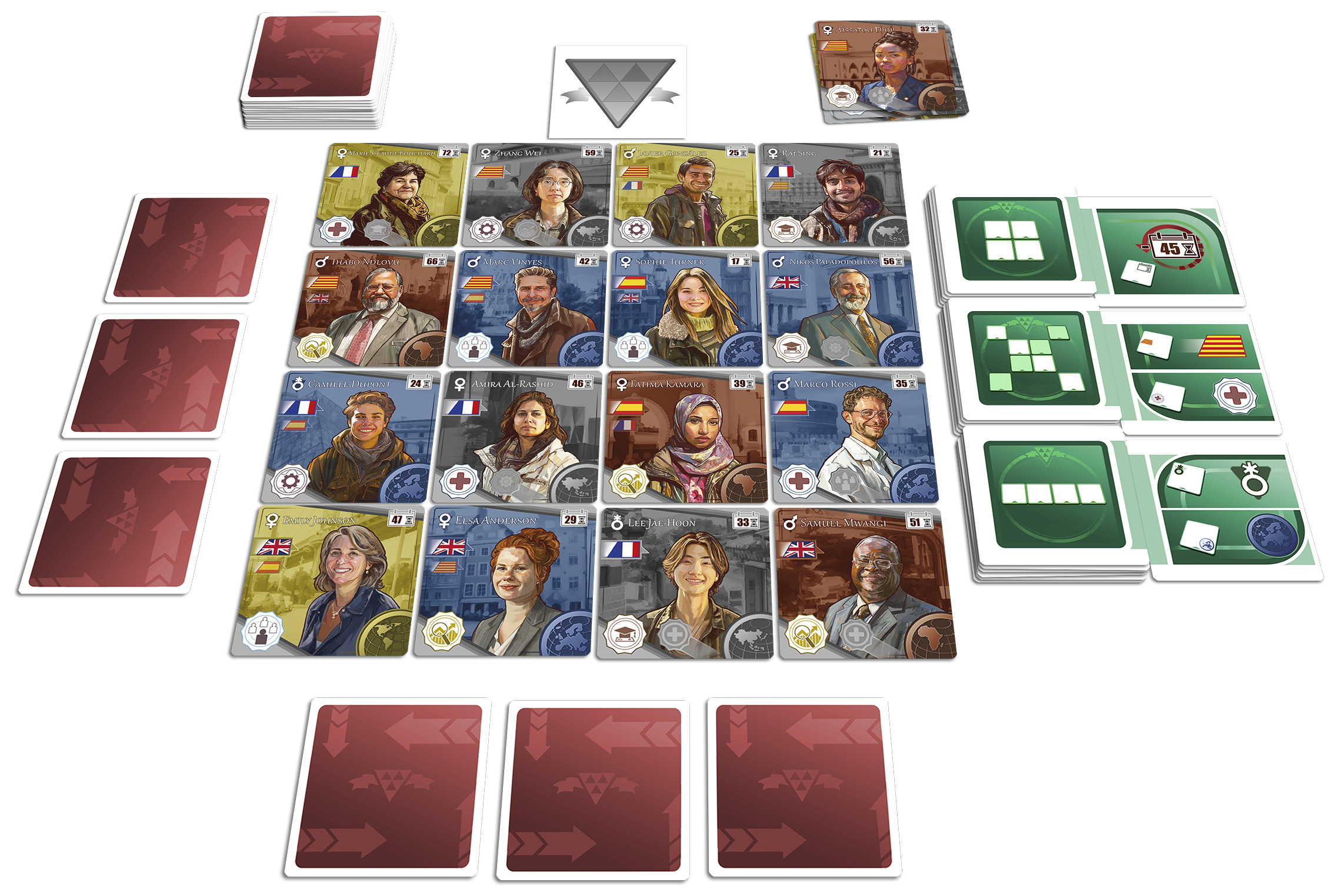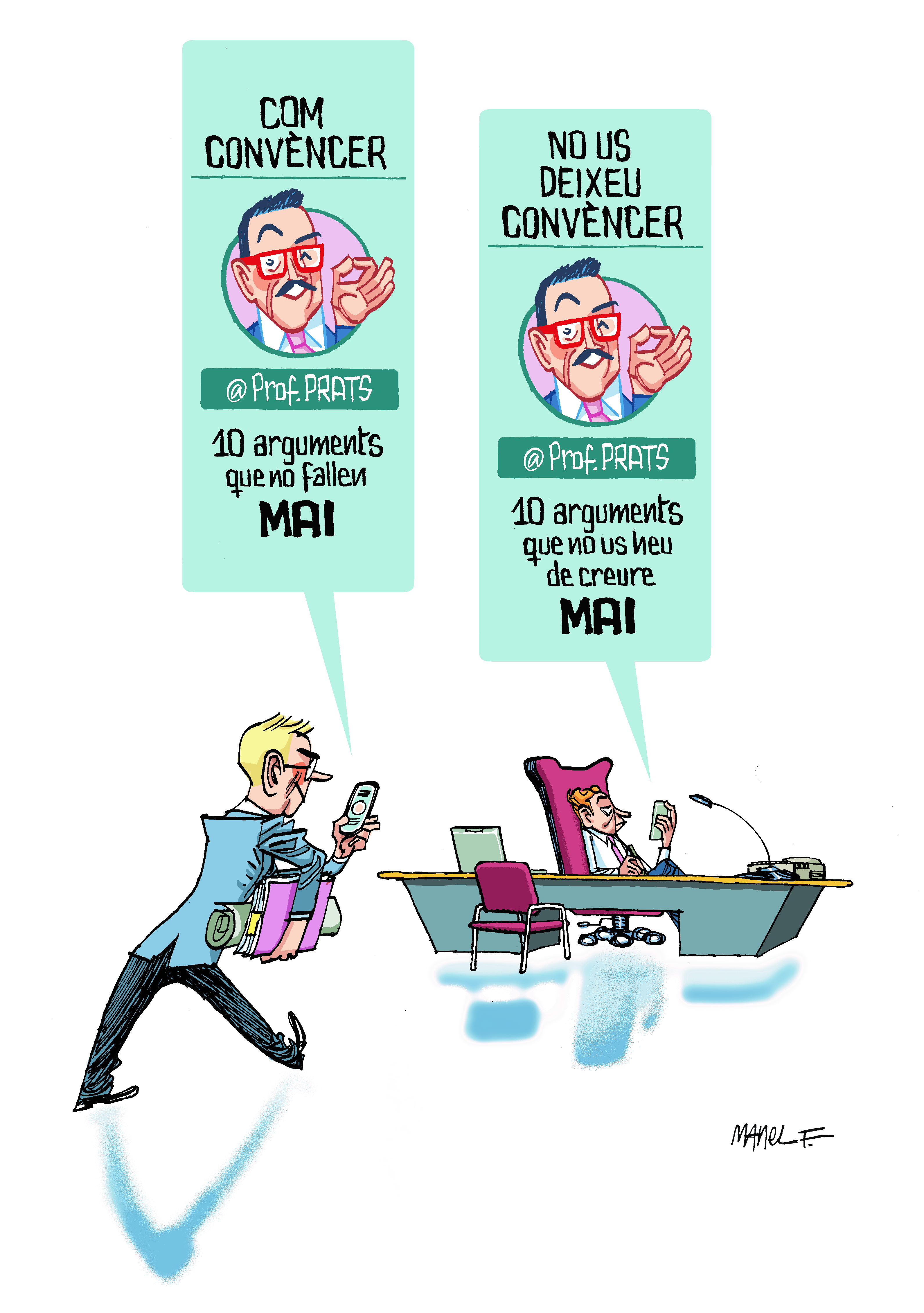01
Levels of leadership, attitudes, and individual, professional, and organizational behaviors based on values
Xavier Gómez-Batiste,
Director of the Chair of Palliative Care
at UVic-UCC
Professor at the Faculty of Medicine
at UVic-UCC
Depending on the components, levels, and stages, we can distinguish three types of leadership based on values: personal, professional and career, and finally, team and organizational leadership, all of which are applicable to the practice of leadership.
Values in Personal Leadership
At the personal level, the foundational aspects of leadership arise in the family environment, education, social and contextual experiences, and beliefs. These are values such as humanism, which translate into behaviors of respect, solidarity, help, tolerance, listening, empathy, honesty, etc. They can be cultivated or built in a kind of “epigenetics” that summarizes the experiences that have influenced and modified the person.
Obviously, it is never perfect, nor necessarily complete, but it constitutes an essential basis for promoting behaviors of excellence. Perhaps the most paradigmatically “excellent” behavior would be compassion, and we would find others more “social” or “humanitarian” such as justice, equity, or solidarity, all related to humanism and helping the most vulnerable. The sociocultural framework is also relevant, where values such as humanism can be more or less explicit.
Values in Professional Leadership
At the professional level, values should preside over/explain professional choices, and even more so, those of professionals in the health and social fields. And it is not because they are “better” people but because of the characteristics of their mission and objectives in the workplace, the groups to which they direct their intervention, and the social impact of their work.
It is also evident that there are professions or specialties more related to humanitarian values. For example, nursing is based on humanistic values and caring behaviors; family and community care, on social values; just like residential care, even more so if it is aimed at caring for vulnerable elderly people or palliative care or palliative care for people or groups in vulnerable countries.
Behaviors in direct care and attention to vulnerable people can be an excellent test of the solidity of values and excellence in a professional. In personal behaviors, it is important to focus on the harmony between expressed values versus practiced values. For example, with the virtue of congruence or coherence, since expressed values are not always applied in practice. Another danger is the arrogant, predominant, sectarian, or disrespectful use towards those who do not express or practice them.
From a professional point of view, I find the concept of trajectory particularly interesting, or the coherence of values and behaviors over time, while obviously taking into account that mistakes can always be made and there are always areas for improvement. The values, mission, and objectives of the organization, along with the management of people and teams, also influence the leader and their actions, which are often observed and evaluated based on their behaviors.
Values in Organizational Leadership
Regarding organizations, teams, or services, it is evident that values should inspire the mission, vision, and corporate objectives and the behaviors of the people who are part of them. It is advisable to start building a team or service with an explicit internal consensus on values, as principles that will govern the practices or behaviors of the organization and that must be in line with their own. For example, curing and caring, or quality and warmth, are compatible objectives in an oncological organization like ICO, and they can become defining “slogans” of the entity. Once again, these principles and values must not only be explicit but also practiced, following the criterion of congruence described earlier, and should be applied to all activities of the organization. In the case of palliative care hospitals, the guiding principle is “You matter,” meaning that you and your needs are of interest to us and guide our objectives.
When we talk about the evolutionary or trajectory aspects of teams or organizations, it is important to remember that, in all organizations, these foundational leaderships, values, and behaviors of the “endorphin phase” can conceal individual interests, values, and behaviors. These are interests, values, and behaviors that will emerge later, in the stages described as “performing” or “norming,” when it is necessary to discuss functions, apply more realistic principles than the initial ones, or adapt the organization. They can also appear when it is not possible to meet some initial expectations, especially those that foundationally and generically propose very humanistic or highly differentiated solidarity values (a palliative care service, an NGO for cooperation with Africa).
In conclusion, we can emphasize that it is necessary to incorporate values such as humanism, respect, or solidarity as a fundamental axis of individual, professional, and organizational behaviors so that they preside over the different objectives and activities. Applied to leadership, they are also essential. Teams and organizations must be built from an explicit consensus on their values, a consensus that must be solid, congruent, and consistent over time.
Xavier Gómez-Batiste
Director of the Chair of Palliative Care at UVic-UCC
Professor at the Faculty of Medicine at UVic-UCC
02
"To lead is to create realities, to give meaning to what we do"
Interview with Ester Garcia,
Corporate Director of Human Resources
at Sumcab
Sumcab Specialcable Group is a global group that designs, manufactures, and supplies special cables and energy systems for robotics, guaranteeing the highest quality and reliability. It accompanies its clients from project engineering to execution. Founded in 1998, with its headquarters in Les Franqueses del Vallès (Barcelona), it operates in more than 50 countries and has its own production centers worldwide. It is a reference in the manufacture of high added value cables. It meets the needs of highly demanding industrial sectors such as the automotive industry, automated production systems, and railway transport, among others. It also has a growing presence in large energy infrastructure projects, including wind, solar, and thermoelectric energy, where it offers tailor-made solutions designed to ensure performance, safety, and durability in critical environments.
We talk about leadership and values with its Corporate Director of Human Resources, Ester Garcia Quilón.
Let’s talk about Leadership. We agree that it is essential, but what does leading mean to you? Commanding? Directing? Making others do what you want? Setting milestones and objectives? How do you understand leadership at Sumcab?
For us, leading is creating realities, it is giving meaning to what we are doing. We could say that leadership is the ability to influence others to carry out visions and purposes in which we believe. In other words, facilitating things to happen. And how is it achieved? By seeking inspiration, speaking from vision, and showing coherence between what we say and what we do.
Leading today is not about imposing but about building together. We must understand leadership as a conversation that is nourished by the team. It is not about doing it perfectly but about doing it with meaning, with others, opening conversations, and leading from the place that the world needs today. We believe in the potential of people, in the desire to enjoy while working, in the power of collaboration, in respect, in the possibility of learning from mistakes, and we believe in the possibility of generating business without having to give up any of the above.
In short, leadership is the decision to give, where communication, empathy, integrity, and decision-making ability are key elements. When people perceive that their leader’s orientation is towards them and that their goal is to help them achieve things, then a space of trust is created that allows the team to reach wherever they want.
Is it necessary to train to lead? Is it learned through practice? Is it an innate competence? Sometimes, is it necessary to unlearn?
Yes, training is key and it is necessary to train to lead. Investing in people’s development is essential in today’s world. At Sumcab, leader training begins with self-knowledge; the leader must know themselves very well to be able to lead their team with excellence. They must understand their thoughts, emotions, motivations, and also their areas for improvement. The first step is to know oneself to then accept what is good and what is not so good; nobody is perfect. Only when you master your inner world can you conquer the outer world. And to learn, the first requirement is curiosity. Only an open mind convinced of not knowing everything can receive knowledge. Questioning oneself about what one believes to know and having a lifelong learning attitude is the indispensable requirement to learn.
From here, the leader at Sumcab begins their training path. A leader does not have to have all the answers, but they must know how to ask the right questions at the right time. Defining and adapting the leader’s training itinerary is fundamental, and we work on it with great intensity and sensitivity because it is really the way to pragmatically reach people’s development. Training to ask “powerful questions” or to give effective feedback to a collaborator, or to actively listen are some of the aspects we work on the most.
And values? What role do they play in leadership?
Values are the foundation of organizational identity and the fundamental principle of Sumcab’s strategy; they are the essence. For this reason, they are so important. Our values define us and translate into behaviors in our relationships with others. If values are what drive people to act in a certain way, how could a leader who does not know their values advance coherently with their team? It would be difficult for them to make others move with determination. Values are fundamental in leadership; when a leader leads based on their values, they generate trust, cohesion, and give meaning to what is done.
Someone might think that focusing on values is more typical of companies that provide services to people rather than an industrial sector company. Do you agree?
Yes, I can understand that it might be seen that way, but I do not agree. All companies exist and are one way or another thanks to the people who are part of them. Sumcab is an industrial sector company and is what it is because of the people who have been and are there, a company that keeps its values and purpose very much alive. For us, focusing on values means being very clear about what guides decisions. We could say that they are the soul of the corporate culture and the engine that drives the business. From the perspective of people, our values create a coherent and ethical work environment, and from the business perspective, our values are the competitive advantage. They guide us to make sustainable decisions, innovate with purpose, and orient ourselves as much as possible to customer service.
How are corporate values aligned with the individual values of each person? Are the company’s values communicated to people when they join? Are they a criterion for personnel selection?
Yes, we have values present from the beginning of the person’s experience at Sumcab. In the selection process, we delve into and identify the person’s values, who they are, and what motivations they have. The person’s values define them and directly influence how they will use their skills, how they will work. Our values are disruption, commitment, and proximity. Disruption for us means breaking the standard, going beyond to reach our clients and provide the solutions they need. Commitment, we understand as the feeling that identifies us with our project, and proximity, as the ability to be close, to understand, to provide security and trust.
We communicate and transmit Sumcab’s values from the beginning of the collaborator’s experience, and it is a very good moment because it is the beginning of the relationship and allows us to create the foundations and share. In fact, when you identify your own values with those of the people you manage, you can really understand what motivates them and guide leadership to develop the team.
What does working from values bring to the company? How do clients and suppliers value it?
Working from values gives us coherence, stability, and purpose. It helps us build a company that not only seeks technical excellence but also puts people at the center of everything we do. Thanks to this, decisions are made with greater clarity, we act with integrity, and generate long-term trust, both with the team and with our clients and suppliers. For us, growing does not mean moving away from our essence; Sumcab keeps its family spirit, close and committed, alive even in a global environment. Betting on values creates a climate where people work motivated, innovation arises naturally, and collaboration becomes a real engine of growth.
Our clients highly value this way of being. They see us as a partner who truly gets involved, who listens, who understands needs, and who fulfills commitments. More than a supplier, they consider us a travel companion. Partners also recognize this approach. They know that we treat relationships with seriousness, respect, and long-term vision. And this generates a solid bond based on mutual trust. In short, working from values not only gives meaning to our day-to-day but also differentiates us in an increasingly demanding market and positions us as a human, reliable, and close company.
In what aspects has the Chair of Leadership in Values helped you to implement leadership based on values in the company?
The Chair of Leadership in Values has offered us the opportunity to reflect on our leadership and observe our key aspects. It has made us learn from ourselves, to question ourselves, to deepen our knowledge as an organization. This work has generated a framework of exchange with a common language. We are in a process of change and find ourselves in a rapidly changing world where having the necessary tools and resources to work on skills and abilities is key.

"Leader training begins with self-knowledge"

"When a leader leads based on their values, they generate trust, cohesion, and give meaning to what is done"

"Working from values gives us coherence, stability, and purpose"
03
Valentí Martínez recommends...
Valentí Martínez,
Academic Director of the Values-Based Leadership University Chair
at UVic-UCC
04
Lid-VA!
The game of the Values-Based Leadership University Chair
Recommended by:
CAE, formació i serveis socioculturals



